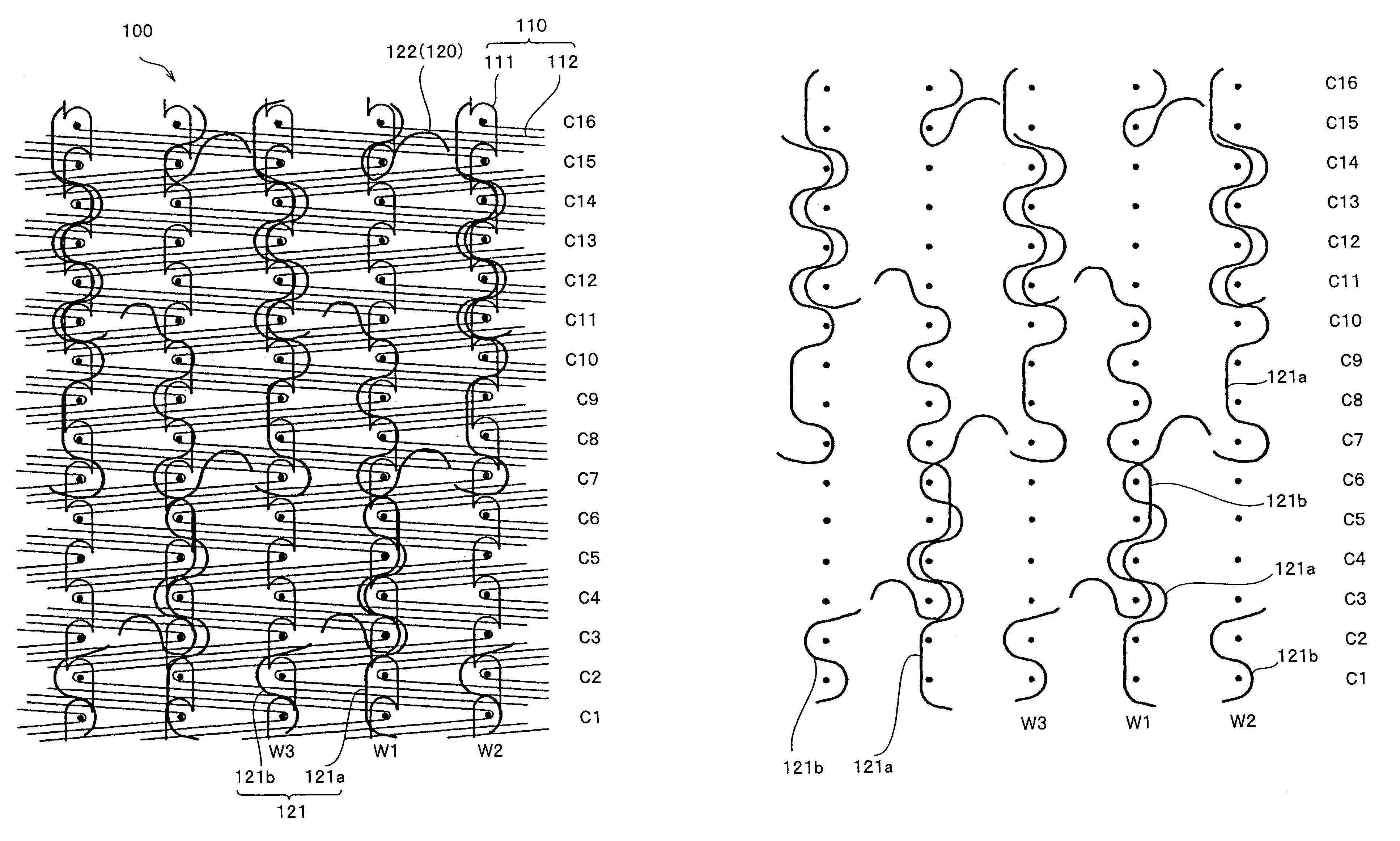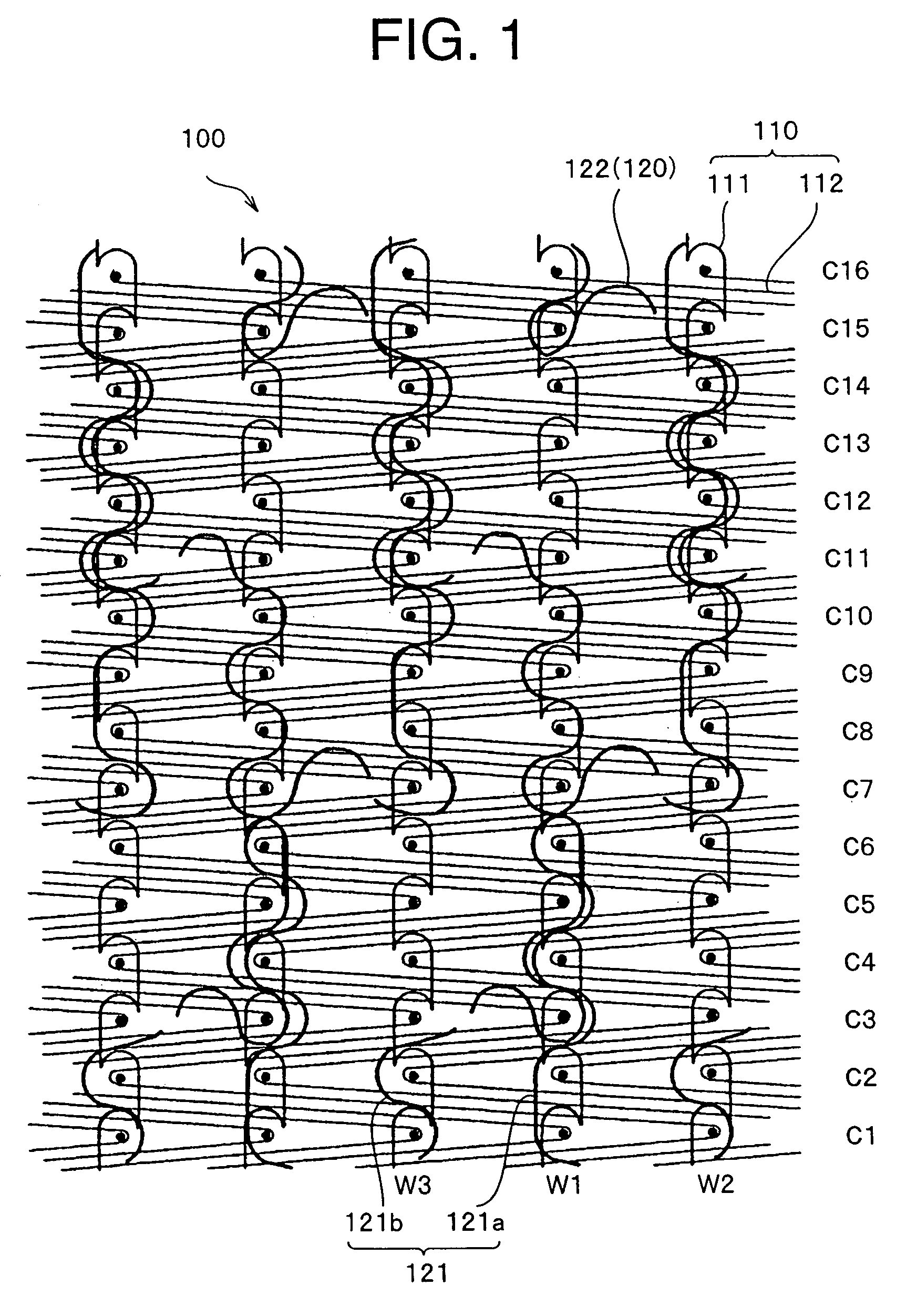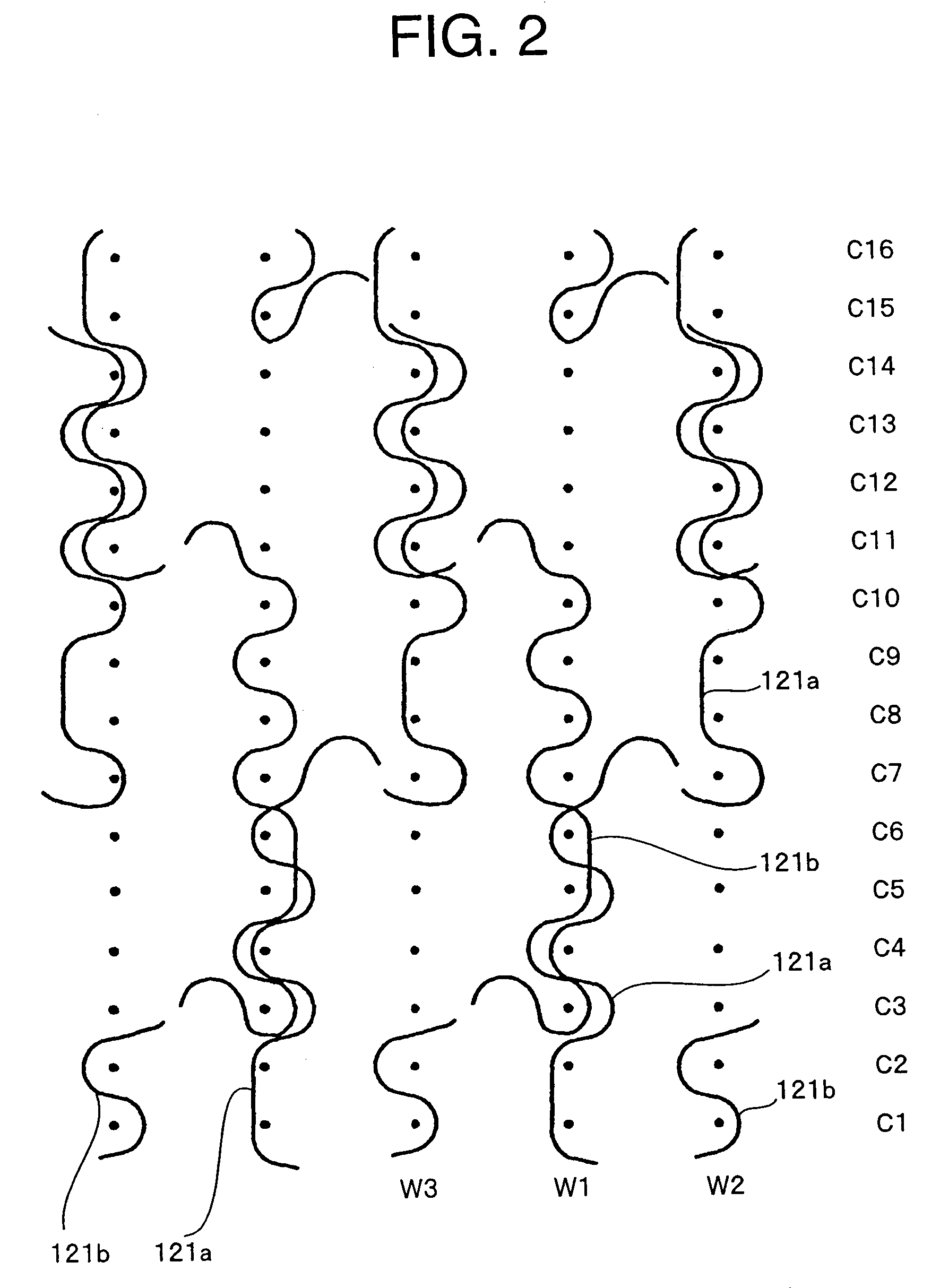Knitted surface fastener
- Summary
- Abstract
- Description
- Claims
- Application Information
AI Technical Summary
Benefits of technology
Problems solved by technology
Method used
Image
Examples
first embodiment
[0030]FIG. 1 shows an entire structure diagram of the male knitted surface fastener according to a first embodiment of the present invention. FIG. 2 shows an independent structure of engaging element forming yarns in the first embodiment. FIG. 3 schematically shows a knitting construction of an entire surface fastener. Although in FIG. 3, sizes of composition yarns are changed or stitches and its densities are expressed extremely large in order to facilitate understanding, actually, the sizes of the composition yarns are arbitrary. Further, since the densities of the stitches are high, gaps formed between stitches are extremely small.
[0031]A male surface fastener 100 of this embodiment is composed of a base fabric 110 and hooks 120 protruded from an entire surface of the base fabric 110. The base fabric 110 is constituted of chain knitting yarns 111 having 1-0 / 0-1 structure which forms a wale W, and weft in-laid yarns 112 having 0-0 / 5-5 structure which run in a zigzag shape across f...
second embodiment
[0038]FIG. 4 is a structure drawing showing an entire structure of a knitted surface fastener 100 according to a second embodiment of the present invention. According to this embodiment also, a base fabric 110 is composed of chain knitting yarns 111 having 1-0 / 0-1 structure forming wales W and weft in-laid yarns 112 having 0-0 / 5-5 structure running across five wales W in the zigzag shape, each of the weft in-laid yarn being inserted into stitches of the chain knitting yarns 111. At a same time when the base fabric 110 is formed, loops are formed by knitting an engaging element forming yarns 121 into the same base fabric. A side portion of each of the loops is cut out during or after knitting so as to form a hook 120. FIG. 5 is a knitting structure drawing of two engaging element forming yarns 121a, 121b excluding the knitting structure of the base fabric 110. FIG. 6 schematically shows a knitting construction of a knitted surface fastener of this embodiment. Although sizes of knitti...
third embodiment
[0041]FIG. 7 shows a third embodiment of a knitted surface fastener 100 of the present invention. FIG. 7 shows only knitting structures of first and second engaging element forming yarns 121a, 121b while the knitting structure of a base fabric 110 is omitted because its is same as that of the first embodiment. According to this embodiment, the knitting structure of the first engaging element forming yarn 121a is 0-0 / 1-1 / 0-0 / 2-2 / 1-1 / 2-2 and the knitting structure of the second engaging element forming yarn 121b is 1-1 / 2-2 / 0-0 / 1-1 / 0-0 / 2-2. That is, the first and second engaging element forming yarns 121a, 121b are deviated by a single course in a course direction and inserted in a doubled manner in the zigzag shape into a sinker loop of each chain stitch formed in adjoining three courses on a same wale.
[0042]Therefore, the first and second engaging element forming yarns 121a, 121b are inserted into chain stitches of adjoining two courses in a double manner in the zigzag shape on a wal...
PUM
 Login to View More
Login to View More Abstract
Description
Claims
Application Information
 Login to View More
Login to View More - R&D
- Intellectual Property
- Life Sciences
- Materials
- Tech Scout
- Unparalleled Data Quality
- Higher Quality Content
- 60% Fewer Hallucinations
Browse by: Latest US Patents, China's latest patents, Technical Efficacy Thesaurus, Application Domain, Technology Topic, Popular Technical Reports.
© 2025 PatSnap. All rights reserved.Legal|Privacy policy|Modern Slavery Act Transparency Statement|Sitemap|About US| Contact US: help@patsnap.com



